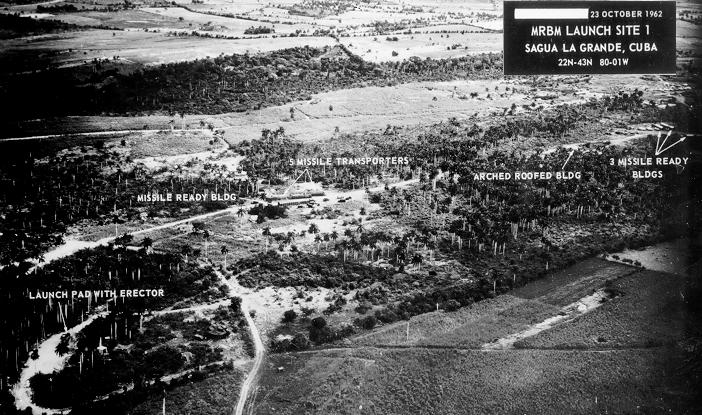Cuban Missile Crisis
On October 14, 1962, a U-2 spy plane flying over Cuba discovered nuclear missile sites under construction. These missiles would have been capable of quickly reaching the United States. President Kennedy convened a small group of senior officials to debate the crisis. Known as ExComm, they met almost continuously for the next two weeks. The group was split between those who wanted a military solution, such as an invasion or air strikes, and those who sought a diplomatic solution to remove the missiles.

Eight days later, Kennedy ordered a naval blockade of Cuba and all U.S. military forces to DEFCON 3. ICBMs were prepared for launch, Polaris submarines were dispatched, and B-52 bombers were placed on alert. The world watched as tensions between the U.S. and the Soviet Union increased. Khrushchev put Warsaw Pact forces on alert. Later, U.S. forces were placed on DEFCON 2.

Reconnaissance flights by U-2s continued over Cuba, while U.S. and Soviet officials exchanged words of warning.
Finally on October 28, Khrushchev announced that they were withdrawing the missiles from Cuba. In the spring of 1963, the U.S. quietly removed the missiles from Turkey that equally threatened the Soviet Union. This crisis is regarded as the closest the world has come to a nuclear exchange. Soon after this incident, the famous "hotline" was installed between the U.S. and the Soviet Union to help resolve future conflicts. It was later learned that the missiles on Cuba were operational and were armed with nuclear warheads.
Soon after the Cuban Missile Crisis, negotiations were renewed regarding a Limited Test Ban Treaty (LTBT).